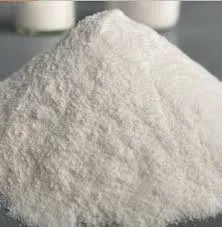
Oct . 02, 2024 05:01 Back to list
MHEC Production Facility for Methyl Hydroxyethyl Cellulose Manufacturing
Understanding the MHEC Methyl Hydroxyethyl Cellulose and Its Applications in Industry
Methyl Hydroxyethyl Cellulose (MHEC) is a non-ionic cellulose ether derived from natural cellulose, primarily used in various industrial applications due to its excellent performance characteristics. Its unique properties, including water-solubility, film-forming ability, and adhesive qualities, make MHEC a valuable ingredient across multiple sectors such as construction, pharmaceuticals, cosmetics, and food production.
Production and Properties of MHEC
MHEC is derived from the etherification of cellulose with methyl and hydroxyethyl groups. This process involves the reaction of cellulose with methyl chloride and ethylene oxide, resulting in a compound that retains the backbone structure of cellulose while acquiring new functional groups. The degree of hydroxyethyl substitution can be varied, allowing manufacturers to customize the viscosity and solubility properties of MHEC to suit specific applications.
MHEC is characterized by its ability to form viscous solutions in water, which is critical to its function in many industries. The viscosity can be manipulated by altering the concentration of MHEC in solutions, making it versatile for different uses. It remains stable over a wide range of temperatures and pH levels, further broadening its applicability.
Applications in Construction
One of the prominent applications of MHEC is in the construction industry, particularly in the formulation of cement-based products like tile adhesives, grouts, and self-leveling compounds. MHEC enhances the workability of these materials, allowing for easier application and better adhesion to surfaces. Furthermore, it helps improve water retention, which is essential for preventing premature drying of the mortar, thereby enhancing the overall performance and durability of the applied product.
In addition, MHEC contributes to the enhanced flexibility of construction materials. By incorporating MHEC, manufacturers can produce formulation that resists cracking and improves the structural integrity of buildings and other infrastructure. This is particularly important in regions that experience variable weather conditions, as it helps maintain the quality and longevity of the construction.
mhec-methhyl hydroxyethyl cellulose factory

Role in Pharmaceuticals
MHEC is also widely utilized in the pharmaceutical industry. Its ability to form gel-like structures makes it suitable for use as a binder in tablets, where it ensures uniform distribution of active ingredients. Additionally, MHEC can be used in controlled-release formulations, allowing for the gradual release of medication over time, which enhances therapeutic efficacy and patient compliance.
Moreover, MHEC serves as a stabilizer and thickening agent in various pharmaceutical dosage forms, such as suspensions and emulsions. It not only improves the texture and stability of these products but also plays a role in enhancing the bioavailability of certain medications.
Impacts on Cosmetics and Personal Care
In the cosmetics industry, MHEC is prized for its thickening and emulsifying properties. It is often found in creams, lotions, and gels, enhancing their texture and providing a smooth, pleasant application feel. MHEC’s ability to retain moisture contributes to its use in products designed for skin hydration, making it a popular ingredient in moisturizers and serums.
Additionally, its compatibility with other cosmetic ingredients allows formulators to create a wide range of products with varying characteristics. This versatility is crucial in an industry where consumer preferences can rapidly change, enabling manufacturers to respond quickly to market demands.
Conclusion
Methyl Hydroxyethyl Cellulose is a remarkable compound with extensive applications across various industries. From construction to pharmaceuticals and cosmetics, MHEC contributes to product performance, stability, and user experience. Understanding its properties and functionalities is critical for manufacturers looking to innovate and stay competitive in their respective markets. As consumer needs evolve and industries continue to advance, the role of MHEC in enhancing product performance and sustainability will undoubtedly grow, reaffirming its position as an indispensable ingredient in modern applications.
-
Unlocking the Benefits of HPMC Products: A Gateway to Versatile Applications
NewsAug.07,2025
-
Unleashing the Potential of HPMC Ashland: A Comprehensive Look
NewsAug.07,2025
-
Tile Bonding Cellulose: The Key to Superior Adhesion and Durability
NewsAug.07,2025
-
Hydroxypropyl Methylcellulose Powder: The Versatile Component in Modern Pharmaceuticals
NewsAug.07,2025
-
Hydroxyethyl Cellulose: The Versatile Solution for Various Industries
NewsAug.07,2025
-
Hydroxyethyl Cellulose (HEC): The Versatile Polymer for Various Applications
NewsAug.07,2025







